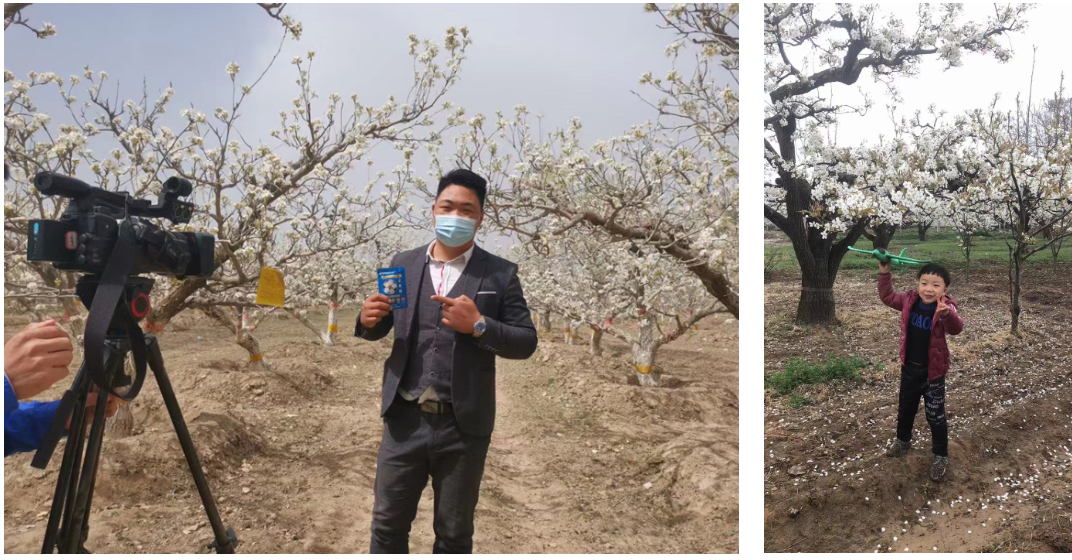Oct . 05, 2024 18:00 Back to list
wholesale do pear trees need auxiliary pollination
Do Pear Trees Need Auxiliary Pollination?
Pear trees are a delightful addition to any orchard or garden, prized for their fragrant blossoms and sweet fruits. However, anyone considering planting pear trees may wonder about the intricacies of their pollination needs. Specifically, do pear trees require auxiliary pollination to produce a bountiful harvest? This article will delve into pear tree pollination, exploring the importance of cross-pollination, the varieties of pears that thrive with and without it, and practical implications for gardeners.
Understanding Pollination in Pear Trees
Pollination is the process of transferring pollen from the male parts of a flower (anthers) to the female parts (stigma), enabling fertilization and the development of fruit. Most pear trees require cross-pollination – the transfer of pollen from one tree to another – to set fruit effectively. This requirement for cross-pollination arises from the genetic makeup of many cultivated pear varieties, which are often self-sterile, meaning they cannot fertilize their own flowers.
Pollination can occur through various agents, including wind and insects, with honeybees being instrumental for pear trees in particular. The flowers of pear trees are highly attractive to bees, which can efficiently transport pollen from one tree to another, ensuring good fruit set. However, not all pear trees are created equal, and understanding the differences between varieties can help mitigate any pollination issues.
Varieties and Their Pollination Requirements
Most European pear varieties (Pyrus communis) rely on cross-pollination. For example, popular cultivars like 'Bartlett', 'Anjou', and 'Bosc' will produce fewer fruits if they are not planted near another compatible variety. It's vital for growers to plant at least two different pear varieties that bloom around the same time to encourage cross-pollination.
In contrast, several Asian pear varieties (Pyrus pyrifolia) are more adaptable and can often set fruit without a pollinator. However, even Asian pear trees benefit from cross-pollination, as it can enhance fruit size and yield. Additionally, some hybrid varieties exhibit varying degrees of self-sterility.
wholesale do pear trees need auxiliary pollination

Choosing Compatible Varieties
When planting pear trees, selecting the right pair of varieties is essential to maximize fruit production. It's crucial to ensure that the chosen varieties bloom at overlapping times; this ensures that they are flowering simultaneously to allow for effective pollination. For instance, pairing 'Bartlett' with 'Bosc' or 'Anjou' can lead to abundant yields.
Gardeners should also consider pollen compatibility. While many pear trees will cross-pollinate, some may not be compatible and could fail to produce fruit even when planted adjacent to each other. It's advisable to consult local agricultural extensions or nurseries for the best recommendations specific to the growing conditions in your area.
Implications for Growers
Understanding the pollination needs of pear trees is vital for growers aiming to cultivate high-yielding fruit-bearing trees. For those with limited space, it is possible to graft compatible pear varieties onto a single tree, allowing for efficient pollination in a small area. This strategy not only maximizes fruit production but can also create unique opportunities for growing multiple varieties.
Furthermore, it is important to maintain a healthy ecosystem around the pear trees to attract pollinators. Planting flowers, herbs, and other shrubs nearby can help create a biodiverse environment that supports bees and other beneficial insects. Avoiding excessive pesticide use is also critical, as it can harm pollinator populations and adversely affect fruit set.
Conclusion
In summary, pear trees do, in most cases, require auxiliary pollination to thrive and produce fruit. Cross-pollination among compatible varieties significantly enhances fruit set and quality. Gardeners can optimize their yield by selecting compatible varieties, fostering an environment that attracts pollinators, and considering innovative planting techniques such as grafting. By understanding and addressing these essential pollination aspects, growers can enjoy a bountiful harvest of succulent pears season after season.
-
AI-Powered Plant Pollen Analysis Using GPT-4 Turbo
NewsAug.03,2025
-
Plant Pollen Analysis: Fast & Accurate with GPT-4 Turbo
NewsAug.02,2025
-
KiwiPollen with GPT-4 Turbo: AI Health Supplement Boost
NewsAug.01,2025
-
Pollen Peach Tree AI Management with GPT-4-Turbo
NewsJul.31,2025
-
Eco Fruit Paper Bags for Peak Freshness | Durability Focused
NewsJul.31,2025
-
Pollen Peach Tree for Pure Pollination and High-Quality Peach Pollen
NewsJul.30,2025